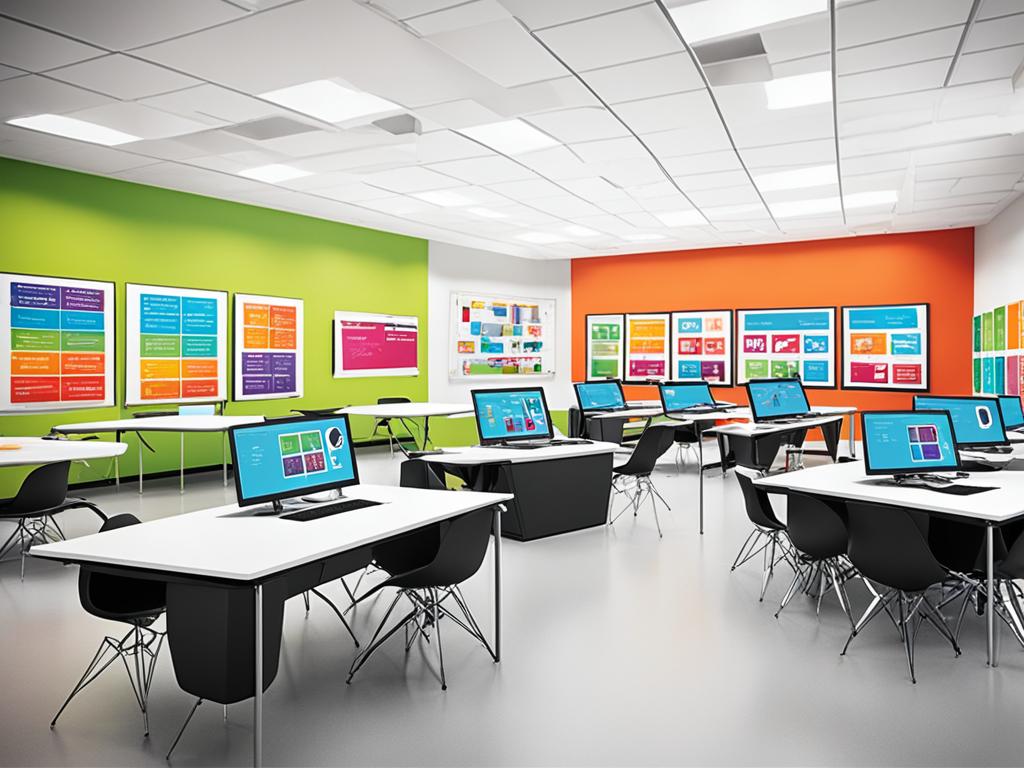Our world has seen significant challenges in education over the past two years, but learners, workers, families, and educators have responded with resilience, ingenuity, and innovation. People want solutions that empower them to discover, develop, and apply their unique aptitudes. It is increasingly clear that a top-down, one-size-fits-all education system is leaving many without options to reach their full potential. Americans are seeking more individualized learning pathways that cater to their specific needs and aspirations.
Key Takeaways
- Innovative creative education programs unlock student potential by offering personalized learning pathways.
- Project-based curricula and hands-on experiences foster an entrepreneurial mindset and holistic development.
- Interdisciplinary approaches and collaborative classrooms promote creative thinking skills and experiential learning opportunities.
- Maker education and design thinking principles empower learners to apply their knowledge to real-world problems.
- Learner-centered pedagogy and student-centric learning create a dynamic and engaging educational environment.
The Need for Innovative Learning Pathways
The desire for innovative learning solutions has been growing, even before the COVID-19 pandemic. Surveys show that nearly three-quarters of Americans who need to learn new skills to advance their careers want to acquire those skills outside of a traditional four-year college or university setting. This increasing demand for personalized, student-centric learning has created a sense of urgency to support transformative educational programs.
Outdated One-Size-Fits-All Education System
The traditional four-year degree program has long been the “tried and tested model” for postsecondary education, but 61 percent of Americans think universities should do a better job of changing to meet students’ needs, rather than expecting students to adapt to this outdated system. Learners are seeking more flexible, innovative pathways that cater to their specific goals and learning styles.
Growing Demand for Personalized Learning
As the job market continues to evolve, Americans are recognizing the need for creative education programs, student-centered learning, and project-based curricula that employ innovative teaching methods and an interdisciplinary approach. They want personalized learning pathways that provide hands-on experiences and collaborative classrooms, offering experiential learning opportunities to cultivate an entrepreneurial mindset and arts-based learning. This demand for a more learner-centered pedagogy, including maker education and design thinking, is driving the need for transformative educational solutions.
Transforming Lives Through Creative Education Programs
In 2021, we developed new partnerships with innovative education thinkers and doers who are transforming the landscape of learning and helping millions unlock their potential. Our support helped the SkillUp Coalition knock down barriers like self-doubt and financial pressures that keep displaced workers from reaching their goals, and establish skill-based programs that provide training and resources to help people find fulfilling careers in growing industries.
SkillUp Coalition: Empowering Displaced Workers
The SkillUp Coalition is a national network of leading nonprofits, education providers, and employers that are working together to support displaced workers in finding new career paths. Through our partnership, we have been able to provide funding and resources to expand their offerings, making it easier for individuals to access the education and training they need to transition into in-demand fields.
mikeroweWORKS Foundation: Promoting Alternative Pathways
We also continued our support of the mikeroweWORKS Foundation, which is driving awareness of the many pathways beyond a four-year degree and empowering individuals to pursue their aptitudes and passions through its Work Ethic Scholarship Program. By highlighting alternative educational options and the value of hands-on, experiential learning, the foundation is helping to challenge the traditional notion of success and inspire more people to explore creative education programs that align with their unique talents and interests.
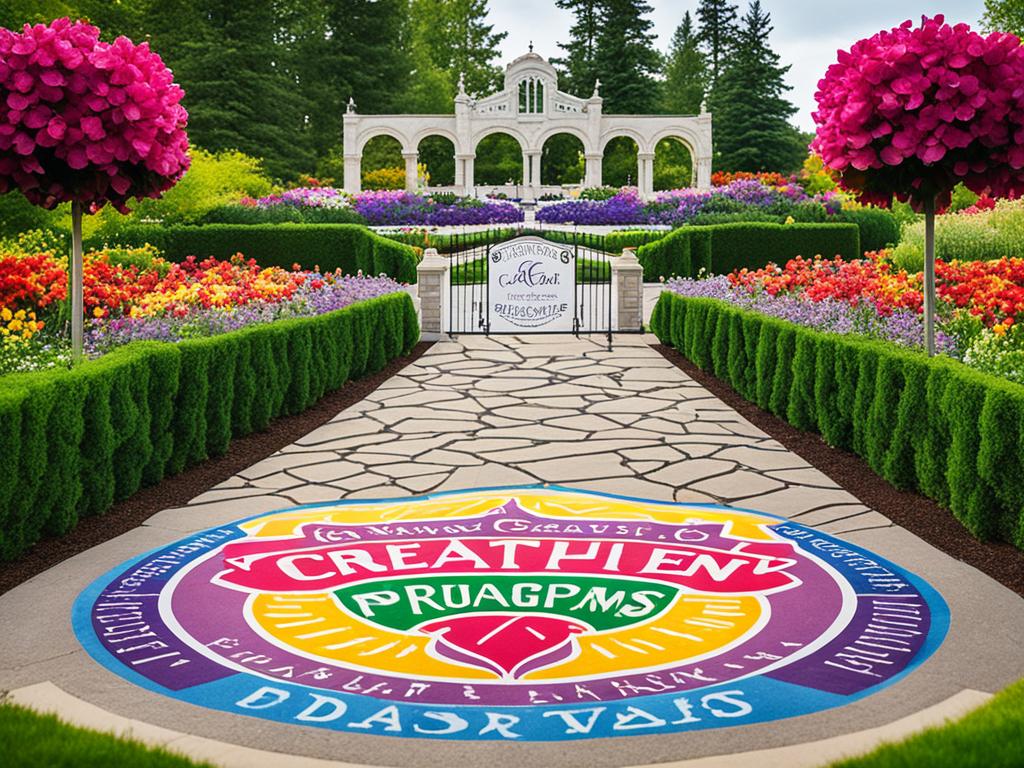
Driving Innovation in Education
To bring forth new ideas and celebrate the people driving change, we expanded our efforts to convene and connect scholars and social entrepreneurs. Our creative education programs, focused on student-centered learning and project-based curricula, have enabled us to foster meaningful dialogues around innovative teaching methods and interdisciplinary approaches to learning.
At the virtual SXSW Edu Conference, our Executive Director interviewed representatives from SkillUp and Climb Hire, two organizations that are championing hands-on experiences and personalized learning pathways to empower displaced workers and create collaborative classrooms that unlock experiential learning opportunities and an entrepreneurial mindset.
We also hosted a series of virtual events with Jeff Selingo’s NEXT Office Hour, providing a platform for leading social entrepreneurs to showcase how they are working to transform America’s postsecondary education system through arts-based learning, experiential learning, and innovative project-based curricula. These discussions aimed to advance the conversation about holistic development and learner-centered pedagogy, better supporting all types of learners, from maker education to design thinking.
Unlocking Human Potential
Our Executive Director, Ryan Stowers, has emphasized that there is a “limitlessness to human potential – the capacity of all to discover, develop and deploy their unique aptitudes and gifts so they can benefit themselves and others.” Employers, educators, and social entrepreneurs must all play a role in transforming the learning landscape to better unlock the potential of every learner. We are committed to using every tool at our disposal – partnerships, events, and opportunities for thought leadership – to advance postsecondary education transformation and support innovative solutions that help learners reach their full potential.
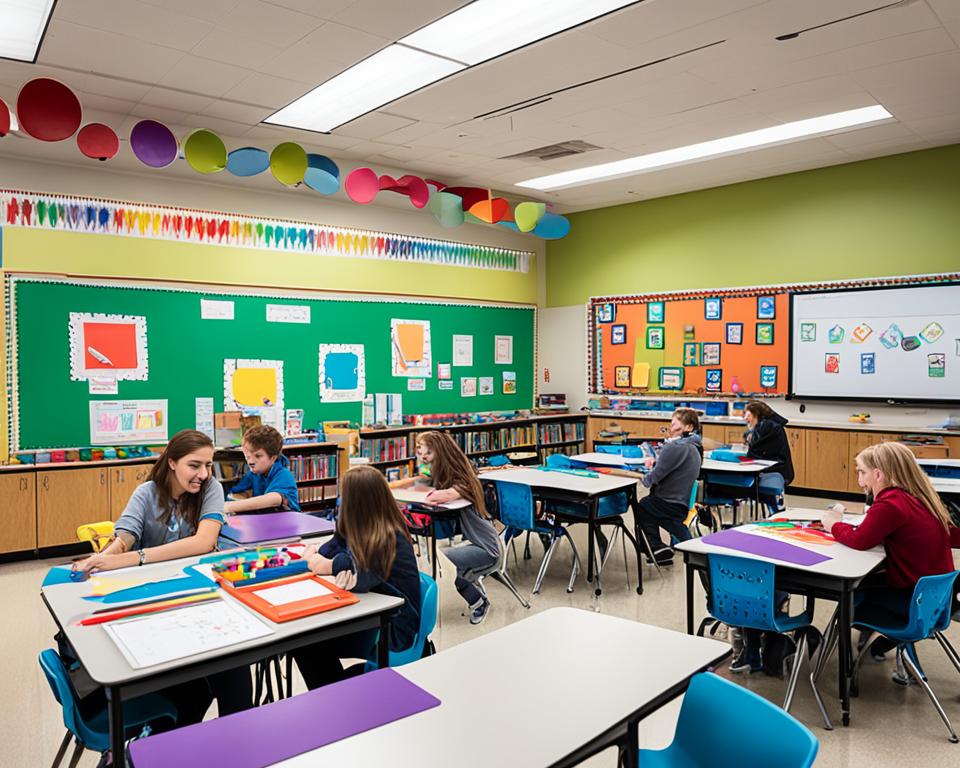
By embracing a student-centered learning approach and implementing project-based curricula, we can empower learners to explore their creative education programs and uncover their unique aptitudes and gifts. Through hands-on experiences and collaborative classrooms, we can foster an environment that nurtures entrepreneurial mindset and design thinking skills.
Our commitment to personalized learning pathways and interdisciplinary approach to education reflects our belief in the holistic development of every individual. By integrating arts-based learning and experiential learning opportunities, we can unlock the limitless potential of our learners and empower them to make a positive impact on their communities and the world.
| Key Strategies for Unlocking Human Potential | Benefits |
|---|---|
|
|
Overcoming Misconceptions About Creativity
It’s time to challenge the common misconceptions surrounding creativity. Contrary to popular belief, creativity extends far beyond mere artistic expression and is not an innate talent reserved for a select few. In fact, creativity can be nurtured and cultivated through dedicated practice and exercise. The key lies in understanding that creative thinking is the ability to generate unique ideas, regardless of whether they have existed before.
Creativity Beyond Artistic Expression
While creative endeavors often involve artistic mediums such as painting, music, or dance, creativity encompasses a much broader spectrum. Innovative teaching methods, interdisciplinary approaches, and project-based curricula all require creative thinking to devise novel solutions and connect diverse concepts in meaningful ways. Creativity is not limited to the arts; it is a critical skill that can be applied across various disciplines, from STEM fields to entrepreneurial mindsets.
Nurturing Creative Thinking Skills
Contrary to the misconception that creativity is an innate talent, research has shown that creative thinking skills can be developed and honed through intentional practice. Hands-on experiences, collaborative classrooms, and experiential learning opportunities all contribute to cultivating creative mindsets in students. Educators can create an environment that supports and encourages creative education programs, student-centered learning, and personalized learning pathways to unlock the creative potential of all learners.
By addressing these common misconceptions and fostering an understanding of creativity as a skill that can be developed, we can empower educators to create learning environments that truly nurture holistic development, learner-centered pedagogy, and the entrepreneurial mindset needed to thrive in our rapidly evolving world.
Integrating Creative Arts in Learning
Creativity is not limited to aesthetics; the Reggio Emilia schools showcase the importance of various expressive languages, such as drawing, painting, movement, and music, in engaging different parts of the brain and inspiring greater student involvement. This comprehensive approach to the “hundred languages” of children acknowledges the diverse ways students can express their knowledge and understanding.
The Reggio Emilia Approach
The Reggio Emilia approach emphasizes the use of multiple modes of expression, including creative arts, to support children’s holistic development. By integrating drawing, painting, and other creative activities into the curriculum, educators can tap into the innate curiosity and imagination of their students, fostering a deeper level of engagement and understanding.
Engaging Multiple Intelligences
Integrating creative arts in learning, such as drawing during math or movement during physics, offers students alternative perspectives and encourages them to explore interdisciplinary connections. This approach aligns with the concept of multiple intelligences, recognizing that individuals possess diverse strengths and learn in various ways. By catering to these different learning styles, educators can create a more inclusive and enriching educational experience for all students.
Through the integration of creative arts, learners have the opportunity to express their knowledge and understanding in innovative ways, ultimately enhancing their overall learning experience and fostering a deeper connection to the subject matter. By embracing this holistic approach, we can unlock the full potential of our students and empower them to become versatile, creative problem-solvers.
Creating a Safe Environment for Creativity
Establishing a safe and supportive environment is imperative for fostering creative education programs and creative thinking in the classroom. When students feel free to express their ideas without fear of judgment, it promotes a culture of collaboration and idea-building. By creating a nurturing atmosphere, educators can empower students to take risks, explore innovative teaching methods, and develop their creative potential.
Celebrating Student Ideas
Celebrating student successes and providing opportunities for collaborative learning experiences further enhance the creative process. When students see their ideas valued and their experiential learning opportunities recognized, it reinforces the notion that their student-centered learning and unique aptitudes are respected. This positive feedback loop encourages entrepreneurial mindset and the continued exploration of project-based curricula.
Collaborative Learning Experiences
Fostering a interdisciplinary approach to learning through hands-on experiences and personalized learning pathways can further stimulate creativity. By engaging students in arts-based learning and design thinking exercises, educators can cultivate a holistic development and learner-centered pedagogy that celebrates the diversity of project-based curriculum and experiential learning.
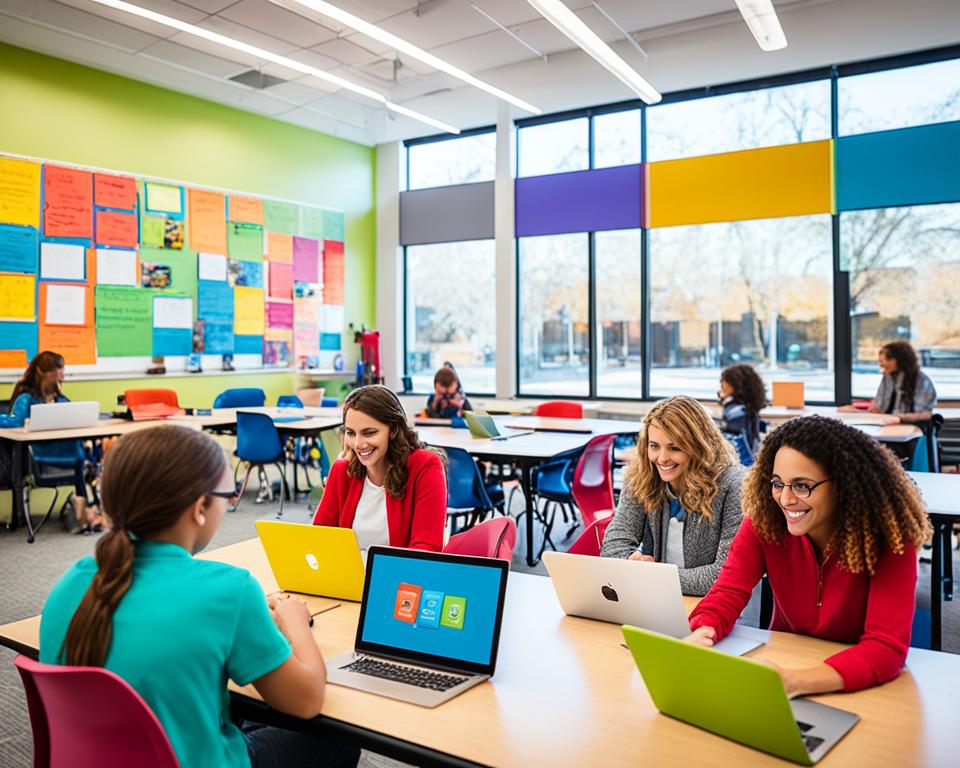
Creative Education Programs: Activities and Approaches
Practical exercises that challenge students to “repurpose” objects or “merge” unrelated items or animals promote imaginative thinking and boundary-breaking creativity. For example, prompting students to explore alternative uses for everyday items or combine disparate concepts inspires diverse ideas and innovative solutions.
Repurposing and Merging Objects
These types of activities encourage students to think outside the box, break down traditional boundaries, and explore the vast potential of everyday objects and concepts. By engaging in playful exercises that require them to reimagine the purpose and connections of various elements, learners cultivate a more entrepreneurial mindset and develop essential creative thinking skills.
Integrated Disciplines and Real-World Problems
Additionally, integrating various modes of learning, such as drawing during math or movement during physics, encourages students to explore interdisciplinary connections and apply their knowledge to real-world problems, which can be more engaging than abstract propositions. This holistic, learner-centered approach to education fosters a deeper understanding of content and the ability to transfer skills across different contexts.
By incorporating a diverse range of creative education programs and activities, we can unlock the full potential of our students, empowering them to become innovative problem-solvers, collaborative team members, and lifelong learners prepared to tackle the complex challenges of the future.
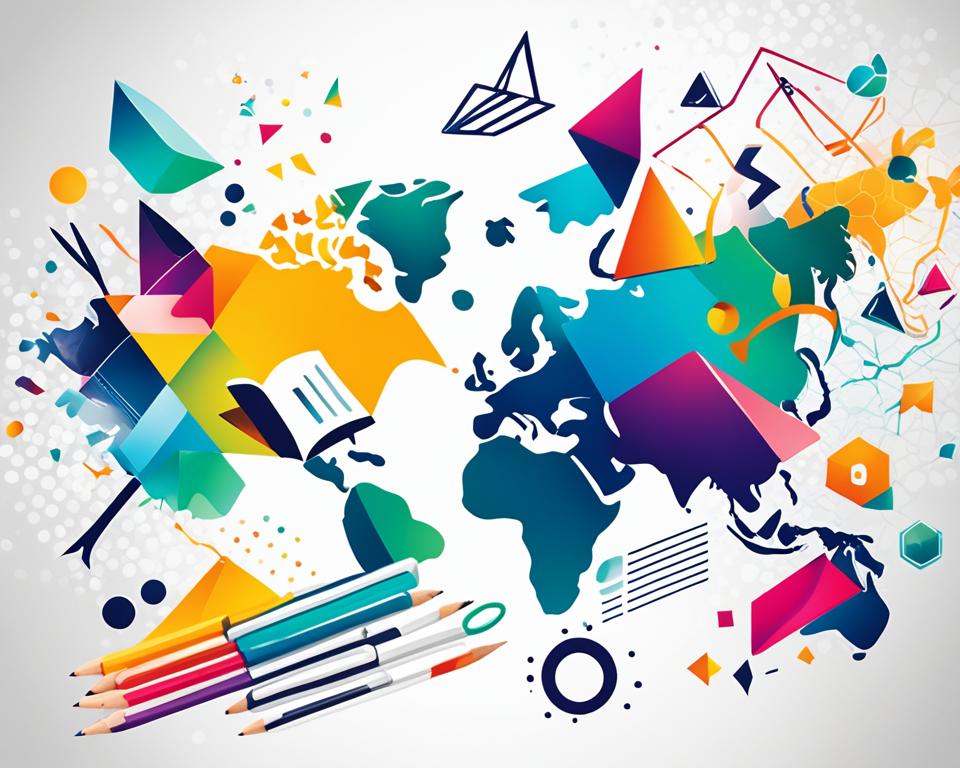
Benefits of Creative Thinking in Education
Engaging in activities that stimulate creative thinking enhances student enjoyment and active participation, contributing to improved behavior within the classroom. A positive learning environment, fueled by creative thinking, fosters a harmonious educational experience. By integrating engaging activities and providing a safe environment, educators can initiate a ripple effect, enhancing both learning outcomes and classroom behavior.
Improved Student Engagement and Behavior
When students are given the opportunity to explore their creativity, they become more invested in the learning process. Creative education programs that encourage hands-on experiences, project-based curricula, and collaborative classrooms have proven to increase student engagement and promote better classroom behavior. By tapping into the entrepreneurial mindset and diverse learning styles of students, these innovative teaching methods create a dynamic and enjoyable educational atmosphere.
Celebrating Diversity in Learning Styles
A creative curriculum that embraces an interdisciplinary approach and personalized learning pathways celebrates the diversity of student learning styles. By incorporating arts-based learning, experiential learning opportunities, and maker education, educators can cater to the unique aptitudes and needs of each individual. This holistic, learner-centered pedagogy empowers students to discover, develop, and apply their creative talents, leading to enhanced engagement, academic success, and personal growth.
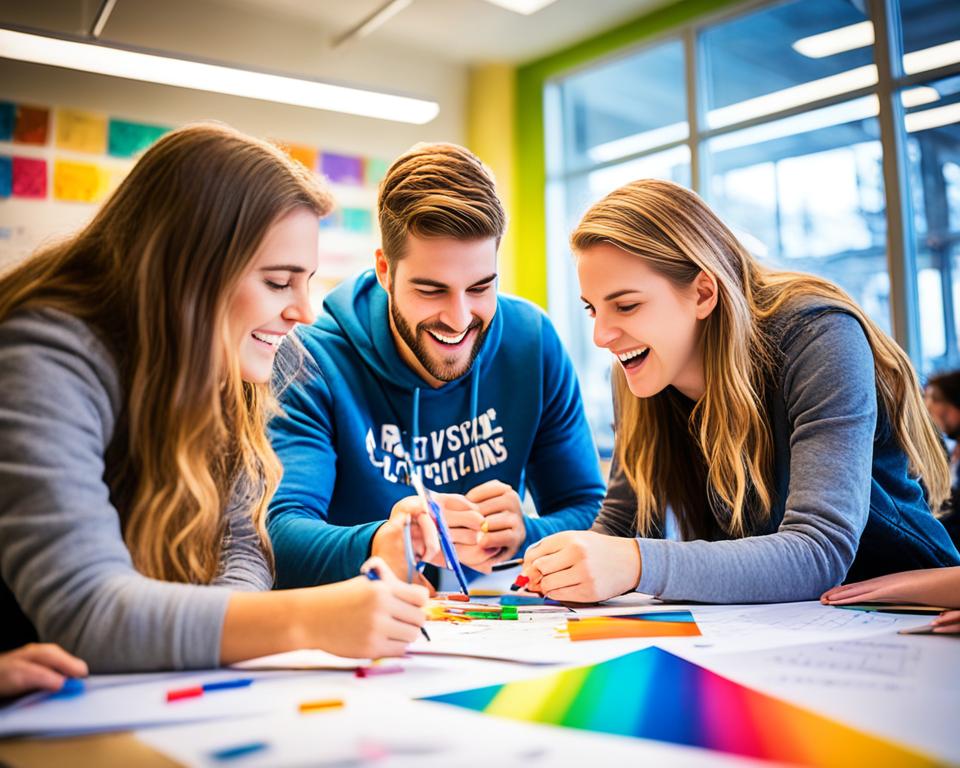
Professional Growth for Educators
A creative curriculum not only benefits students but also provides substantial professional rewards for educators. Engaging in ongoing professional development opportunities focused on creative teaching methods can enhance educators’ pedagogical skills and broaden their teaching repertoire. Implementing and documenting a creative curriculum opens doors for educators to share their experiences through workshops, conferences, or publications, further elevating their professional profiles.
Embracing creativity provides educators with a fulfilling and dynamic professional trajectory, marked by continuous growth, recognition, and a positive impact on students and peers. By fostering a student-centered learning environment and incorporating project-based curricula, innovative teaching methods, and hands-on experiences, educators can unlock their own potential and drive holistic development in their classrooms.
| Professional Benefits of Embracing Creativity | Opportunities for Educators |
|---|---|
| Enhanced pedagogical skills and broader teaching repertoire | Ongoing professional development workshops |
| Elevated professional profile through sharing experiences | Presenting at conferences and publishing articles |
| Fulfilling and dynamic professional trajectory | Continuous growth, recognition, and positive impact on students |
By embracing creativity and implementing learner-centered pedagogy, interdisciplinary approaches, and collaborative classrooms, educators can reap the rewards of a fulfilling and dynamic professional journey, marked by continuous growth, recognition, and a positive impact on their students and peers.
Conclusion
The need for innovative learning pathways has been growing, even before the COVID-19 pandemic. Americans are seeking more personalized, student-centric educational solutions that cater to their unique needs and aspirations. Through our partnerships and initiatives, we have supported transformative creative education programs that are empowering learners to discover, develop, and apply their aptitudes in ways that improve their lives and the lives of others.
By addressing misconceptions about creativity, integrating creative arts in learning, and creating safe environments for innovation, we can unlock the limitless potential of all students. As we continue to drive education transformation, we remain committed to advancing postsecondary education and supporting innovative solutions that help learners reach their full potential.
Our world has seen significant challenges in education over the past two years, but learners, workers, families, and educators have responded with resilience, ingenuity, and innovation. People want solutions that empower them to discover, develop, and apply their unique aptitudes. It is increasingly clear that a top-down, one-size-fits-all education system is leaving many without options to reach their full potential. Americans are seeking more personalized learning pathways that cater to their specific needs and aspirations.
FAQ
What are the key features of innovative creative education programs?
How is the demand for personalized learning pathways growing?
How are innovative education programs transforming lives?
How is the Foundation driving innovation in education?
What is the Foundation’s perspective on unlocking human potential?
How can we address misconceptions about creativity?
How can integrating creative arts in learning benefit students?
What is the importance of creating a safe environment for creativity?
What are some practical exercises that promote creative thinking?
What are the benefits of a creative curriculum for students and the classroom environment?
How can a creative curriculum benefit educators professionally?
Source Links
- https://charleskochfoundation.org/stories/unlocking-the-potential-of-every-learner/
- https://www.linkedin.com/pulse/creativity-classroom-unlocking-potential-students-lili-ann-kriegler-qildc
- https://www.edsurge.com/news/2024-03-20-unlocking-the-power-of-creativity-and-ai-preparing-students-for-the-future-workforce
